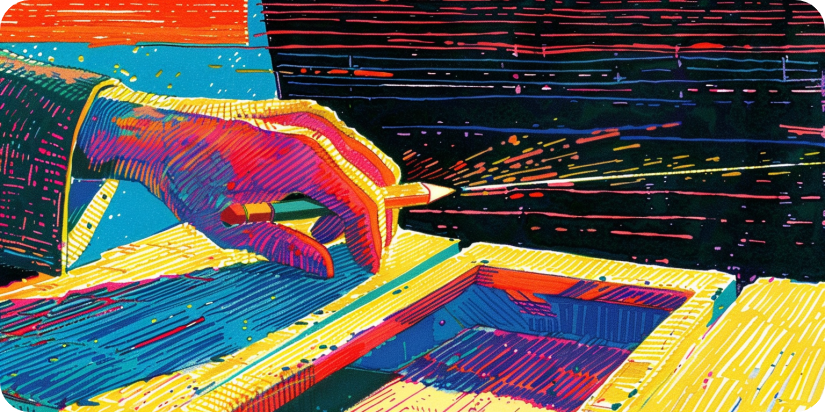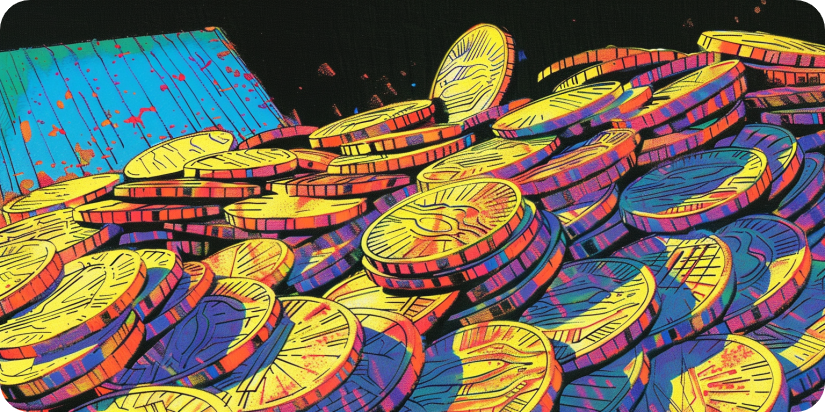✍️ This opinion piece was contributed by Diario, cofounder and COO of NFT Price Floor ✍️
Hard power vs. soft power
Most analyses regarding what makes a Layer (L1) blockchain superior to others and a great investment usually emphasize technical aspects. They often describe innovative and ground-breaking attributes, which are presumed to act as a panacea, solving all the inherent problems and dilemmas that public blockchains have faced since their inception.
And while it’s crystal clear that tech is paramount and constant improvements and discoveries in consensus design, cryptography, and distributed systems engineering (hard power) are indispensable to make this tech available to everyone in the world, it’s important to remember that blockchains are not just tech.
Indeed, blockchains rely on the faith (attention) of the community, rooted in shared values, culture, and, at their best, a universally accessible ethos. They offer everyone the opportunity to participate in an open, optimistic history that is both recorded in blocks and embraced by the community’s imagination. This is what we call the soft power of a blockchain.
Blockchains are the ultimate coordination tool, definitive ledgers where humanity can record its digital existence and history. Blockchains are tech, but they are much more than tech. And if you only judge them by technical standards, if you only evaluate their technical features and you ignore their soft power, you will miss the bigger picture.
On history, writing, and accounting
As Yuval Noah Harari explains in Sapiens, humans came to dominate the world because of their ability to cooperate in large numbers, thanks to our unique capacity to believe in things, i.e. stories, that exist purely in our imagination.
Those stories based on shared belief systems, those cultural artifacts that encode different aspects of human existence, when combined together and recorded, give rise to history.
And how do we record history? Writing.

So on the one hand, we can define history as a sum of shared stories that human communities have consensus on regarding their importance and validity. And on the other, we can affirm that history and writing are intertwined, as you cannot have a proper history without a recording system.
Let’s add another piece here. The world’s earliest writing, cuneiform, originated from an ancient system of accounting that used clay tokens for tracking goods like livestock and grain in the early agricultural societies of the Near East. Initially, these tokens represented various goods, with different shapes indicating different items or quantities, like a cone for a small amount of barley.
By around 3,500 B.C., as cities emerged and the economy grew more complex, the variety of tokens expanded to around 300 different shapes to cover a wider range of goods produced in urban areas. Interestingly, the final push towards developing writing came from the Mesopotamian society’s shared belief in the afterlife.
History, shared beliefs, a recording system, an accounting mechanism, tokens… do those concepts sound familiar to you, anon?
Money and moneyness as shared beliefs
According to the aforementioned Harari, the human ability to coordinate in large numbers arises from our unique capacity to believe in things existing purely in the imagination, such as gods, nations, money, and law.
Put in other words, large-scale cooperation systems like religions, trade networks, and political institutions are the result of a unique human capacity for fiction.
Under that framework, money only exists as long as there is a shared belief in it as a system of mutual trust. And in that sense, Harari’s thesis directly connects with the subjective theory of value. This posits that the value of any good is not determined by the inherent property of the good, nor by the cumulative value of components or labor needed to produce or manufacture it, but instead by the individuals or entities who are buying or selling the object in question.
Due to this concept, the value of an item can significantly rise from the time it was created, as it becomes viewed as more valuable or desirable in certain cultural contexts. Numerous factors can impact this evolution, such as changes in age, personal attachment, rarity, etc. In a nutshell, cultural relevance.
But why is all this important?
The subjective theory of value (STV) helps us make sense of all the stores of value humankind has adopted over history, like salt, cattle, shells, gold, and also crypto assets like bitcoin and ether.
Yet only by understanding Harari’s thesis regarding the key role shared beliefs have played in human history can we really make sense of STV’s full force and how it operates.
Like human history itself, successful monies and stores of value are not only the product of an initial, seminal shared beliefs — they are networked artifacts that require constant attention!

No money, no funny, some would say. In the case of blockchains, you’d better make sure your preferred L1 has a store of value as a native asset before claiming it is superior to its peers. If it’s not good money, it won’t have good economic security. Period.
And how can you make sure your native asset has truly become a store of value and it’s not just a fad?
History and cultural vibrance. Therein lies the answer.
Blockchains as digital history ledgers
Remember, a public blockchain like Ethereum or Bitcoin is a shared, decentralized, immutable, and censorship-resistant ledger that facilitates recording transactions and tracking assets.
In other words, once information is recorded on a blockchain, it cannot be easily altered or deleted. This characteristic is vital when it comes to preserving historical records, as it ensures the authenticity of documents or transactions stored onchain.
We give a lot of credit to the ingenious system that allows the trustless management of transactions and balances. But what about the actual history that is recorded? Isn’t it as fundamentally important as the underlying tech itself?
Definitely, in my view.
ETH, the native asset of Ethereum, derives its value from its cryptoeconomic properties, according to the rules set by the protocol. However, as we already pointed out, that would mean nothing without a faithful and large community of humans that do see value in both using the network and storing wealth in the native asset.
The shared belief of the community in the value of the network gives rise to a rich economic history that is recorded on the Ethereum blockchain as a public ledger. And it’s precisely that rich history, that shared culture of the community, that leads to a positive feedback loop that constantly reinforces the value of ETH, its native asset.
History is nothing more than the sum of shared stories that hold significance for a community, with a social consensus on their importance. In the case of blockchains, their history reflects the social and economic relationships that develop among the members of their community.
These relationships should not only be measured in quantitative terms but also qualitatively, as a reflection of the culture underpinning them:
- Is it fair to compare the impact of the creation of CryptoPunks and their second-order effects, leading to the development of an entire industry, with the launch of a low-effort NFT collection that leads to a temporary craze?
- Can we equate the impact of Uniswap and other 0-to-1 DeFi breakthroughs with simpler 1-to-N protocols that offer incremental improvements and sometimes seem like excuses to sell a token?
So while one may argue all L1s have their own history inscribed in the form of blocks, sadly, not all blockchain histories are born and raised equal, and the influx they exercise on their respective native assets (and most specifically, on their abilities to accrue value over long periods of time and become Stores of Value) is not the same.
Zooming out
An L1 has value as a coordination tool and decentralized ledger on which to build an economy and a community of communities. However, not all blockchains are equal. Attributes like decentralization, censorship resistance, and trustlessness start as technical features but evolve into core values (a belief system/shared narrative) that bind a community together.
Without a solid belief in these values and ethos, and without a vibrant, creative community that chooses the blockchain as a home for their projects and repository for their creations and wealth, it is impossible to develop a rich and lasting history. This shared history attracts new members who will help grow the network. It is this history that provides the asset with an invisible but crucial support: the faith and constant attention of the community.
Consider Ethereum: imagine what it would be worth and how it would have sustained its value over ten years if Vitalik had not launched via an ICO and established a Foundation to steward it. What if he had not implemented a Proof of Work phase to prevent excessive token concentration? What if he had acted deceitfully and not prioritized the network’s best interests? What if Ethereum had not been chosen as the primary home by Larva Labs, Hayden Adams, and many other founders?
The Ethereum community and history would be completely different. Technology is not the main problem because it’s upgradeable, even if subject to challenges from technical debt. History, however, is unrepeatable, irreplaceable, and indelible. Only through a rich and enduring history can the native asset of a blockchain develop a premium!
This news is republished from another source. You can check the original article here










